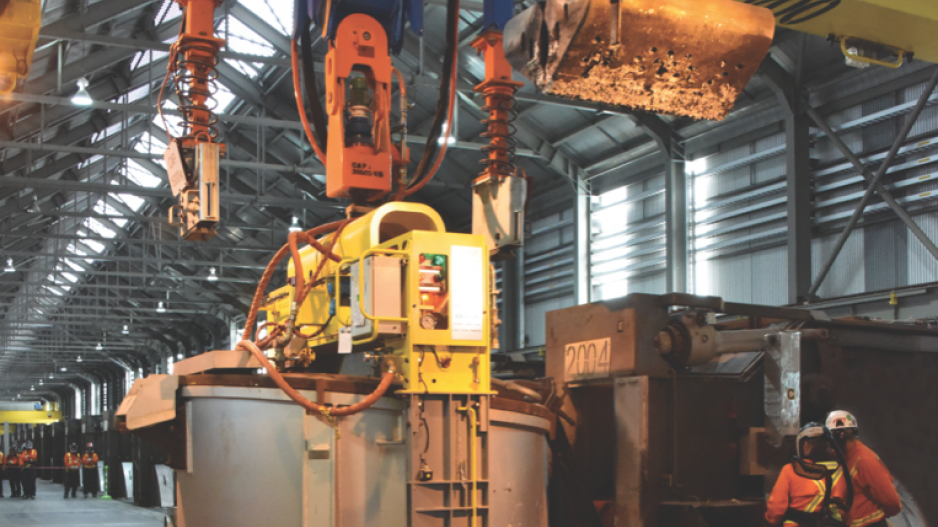The Regional District of Bulkley-Nechako (RDBN) is throwing its support behind the Stellat’en and Saik’uz First Nations, who are pushing Rio Tinto to tear down the Kenney dam, or at least reduce the amount of water it uses in order to restore Nechako River levels.
Tearing the dam down would have dire consequences for Rio Tinto’s aluminum smelter in Kitimat, which employs more than 1,000 people.
The Stellat’en and Saik’uz -- members of the greater Nechako First Nation -- have been in court trying to exercise their aboriginal rights in a nuisance claim against Rio Tinto, the aim of which is restore river levels in the Nechako.
While he said it would be nice if the BC Supreme Court ordered the dam torn down, Stellat’en Chief Robert Michell conceded that is unlikely to happen.
At the very least, he hopes the BC Supreme Court will order a compromise, in which Rio Tinto would be forced to reduce the amount of water it uses, since about 20% of the power generated is not used by the smelter, but is surplus sold to BC Hydro.
“In a perfect world, and in our world, from an indigenous perspective, it would be nice if the dam was never there,” Michell told BIV News. “Removal of the dam would be great. But understanding how governments and commercial activity works, that’s probably a very long shot. So we’re trying to find ways to live within the dam still being there.”
Michell added that the two First Nations involved in the court challenge are not looking for compensation, which can often be the result of an aboriginal rights infringement case when the damage is already done. Their sole aim is to restore the health of the Nechako River.
“This is definitely not about money,” Michell said. “It’s about trying to make sure that river survives for generations to come.”
Their efforts to restore the health of the Nechako river now has the moral backing of the RDBN in the form of a resolution.
“The district stands with the Nechako First Nations in opposition to the continued degradation of the Nechako watershed, and wants to establish a meaningful role in the management of a new, more natural flow regime,” the RDBN says in a news release.
“We’re supporting them to build a healthier eco-system and a healthier management system on the Nechako River for the water flow that’s there,” Gerry Thiessen, mayor of Vanderhoof and RDBN chairman, told BIV News.
The Kenney dam was built in the 1950s to create the Nechako Reservoir, which powers the Kemano generating station 75 kilometres southeast of Kitimat.
The damming of the river had negative impacts on the Nechako River and First Nations, particularly the Cheslatta Carrier, who were forced to relocate when their lands were flooded.
Just last year, Rio Tinto signed the “New Day” agreement to transfer 11,000 acres of land to the Cheslatta and which has provisions for employment, training and business opportunities.
But other First Nations along the Nechako say they too have been affected, mainly in the form of reduced water flows, which raises river temperatures and negatively impacts salmon and sturgeon. It’s estimated that river flow in the upper Nechako River is 36% of what it was before the dam was built.
“The problem we’re having is the temperature of the water, and that’s just a killer with sturgeon and salmon,” Michell said.
When the dam was built, water that would normally flow into the Nechako was diverted to power turbines to generate power for the aluminum smelter in Kitimat.
The Kemano generating station has a generating capacity of 896 megawatts of power – almost as much as the new Site C dam will generate (1,100 MW). The smelter consumes about 80% of the power. The rest is sold to BC Hydro.
If 20% or more of the power that is being generated is not needed for the smelter, it is being suggested that some of the water now used to generate that surplus power could be used to augment flows in the Nechako.
“A lot of work has gone into modelling and taking a look at what other ways we can provide a level of flow in the river that would sustain the fish, the sturgeon, and also sustain everyone that lives off the river, and at the same time protect those downriver from any flooding,” Michell said. “The trick is to have the people who own the dam to buy into it.”
The claim against Rio Tinto was heard by the BC Supreme Court last year.Michell said he is hoping for a ruling sometime this spring.
Asked for comment, Rio Tinto released a statement:
“Rio Tinto recognises the importance of these issues and remains committed to maintaining an open dialogue with local First Nations and the Regional District of Bulkley-Nechako to find solutions.
“Through the Water Engagement Initiative, we welcome a discussion to continue improving the health of the Nechako river and to address collaboratively the many interests represented in the watershed.”




